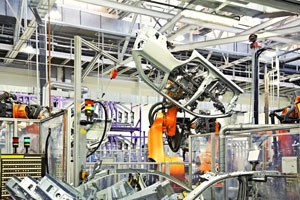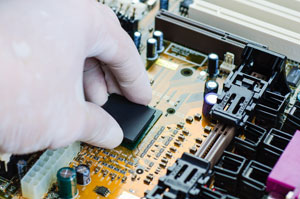
Industrial manufacturing companies face fierce competitive pressures. The rapid pace of new product development and the introduction of innovative technologies require organizations to be adaptable to change. Times are turbulent and significant adjustments must be made to improve efficiency and profitability. Lean assembly capabilities pose strategic challenges and will help minimize expenses. Addressing these issues will provide opportunities for long term growth.
This ever changing environment has given rise to sophisticated enhancements in product capabilities. Engineers need to colloborate with suppliers to find ways to improve performance while maintaining fast assembly operations. Cost reductions are necessary to meet the requirements of affordability and customer demands. Agility and careful planning will be essential to successfully implementing the execution of offering greater value.
Considerations When Choosing an Adhesive
Selection of the proper adhesive for an application can be a vexing experience. Consideration must be given to joint design and proper surface preparation to guarantee optimum results. Parts may be exposed to tensile, compressive, peel, shear and cleavage stresses. Surface geometry, clearances between parts, strength of substrates play an important role in minimizing stress concentrations. Using the proper techniques for removing contaminants, roughening the surfaces, chemical etching, priming also need to be effectively employed to ensure adequate bond strength.
 Significant research and development has lead to the introduction of advanced snap cure adhesives. These formulations replace traditional mechanical/thermal assembly techniques including fastening, welding and brazing. They evenly distribute load stresses, protect against corrosion, fill gaps, resist cyclic fatigue and improve appearance. Additionally they increase durability, lower weight, boost load bearing capacity and seal against liquids/gases.
Significant research and development has lead to the introduction of advanced snap cure adhesives. These formulations replace traditional mechanical/thermal assembly techniques including fastening, welding and brazing. They evenly distribute load stresses, protect against corrosion, fill gaps, resist cyclic fatigue and improve appearance. Additionally they increase durability, lower weight, boost load bearing capacity and seal against liquids/gases.
Easy to dispense and cure, versatile snap cure systems are energy efficient and eliminate waste. These one part, no-mix compounds polymerize rapidly when exposed to moderate temperature or IR energy. Inaccurate mixing is not a worry. Multiple mix ratios, limited pot lifes and air entrapment concerns are allayed. Reliability is assured.
To ensure that surrounding surfaces are not compromised during the bonding process, snap cure adhesives are engineered with appropriate viscosity to minimize excessive flow and prevent undesirable bleeding.
Snap cure compositions are frequently employed in high volume production processes. The most widely used products are capable of achieving high strength on a variety of substrates at predetermined temperatures usually within 5 to 60 seconds. Cure temperatures can range between 60°C to 125°C. They are 100% reactive, contain no solvents or volatiles and are environmentally friendly to use. They are especially desirable in applications where minimal thickness and significant bond areas are involved.
Particularly noteworthy is that snap cure formulations have both low shrinkage upon cure and low stress characteristics. Dimensionally stable, chemically resistant and high/low temperature serviceable compounds withstand exposure to thermal cycling, vibration, impact and shock. No special processing conditions are needed to achieve prolonged service capability.
New Advances in Snap Curing
Infrared spot curing systems are often used as an alternative to thermal cured ovens. This curing process effectively bonds substrates quickly, efficiently and in many cases creates less thermal stress. Infrared energy absorption accelerates the polymerization of snap cure epoxies. This provides manufacturers fast production lines and improves profitability.
 Steady progress has been made in developing new snap cure epoxy systems with special properties. A significant technological breakthrough was the recent introduction of a compound that softens above 200°F. While maintaining excellent mechanical, electrical and chemical resistant properties this formulation was designed to be reworkable above its Tg. This allows removal and replacement of components on expensive, densely populated printed wiring boards. Advanced industrial PWB's can be salvaged. This represents meaningful cost savings for many high tech companies.
Steady progress has been made in developing new snap cure epoxy systems with special properties. A significant technological breakthrough was the recent introduction of a compound that softens above 200°F. While maintaining excellent mechanical, electrical and chemical resistant properties this formulation was designed to be reworkable above its Tg. This allows removal and replacement of components on expensive, densely populated printed wiring boards. Advanced industrial PWB's can be salvaged. This represents meaningful cost savings for many high tech companies.
Grades also are available that feature high voltage insulation, softness/flexibility and low outgassing characteristics. Often in bonding surfaces with different coefficients of thermal expansion compounds with low CTE's or high elongation are recommended to minimize stress. Snap cure systems also can be employed to bond heat sensitive substrates because of their low temperature curing capability. These compounds are easily dispensed with automatic, semi-automatic and manual applicators. Products are ROHS compliant.
Snap cure adhesives are used for structural bonding of metals/ceramics/plastics, die attach, EMI/RFI shielding, vibration dampening, film laminations and in solder replacement applications. They meet the requirements of automotive, semiconductor, telecommunication, aerospace manufacturing companies for integrity, reliability and dependability. Electrically conductive and electrically insulative products have also been used for the assembly of RFID devices, where high production rates and low temperature curing is essential.
The electronics industry is constantly evolving. This has created new opportunities for snap cure adhesives. Smaller, more powerful devices with increased functionality and mass appeal will change they world we live in. Snap cure adhesives will play a vital role in this transformation. Advanced formulations will become available that give manufacturers more options to find solutions for bonding, different materials, shapes, joints, tolerances cost effectively.
